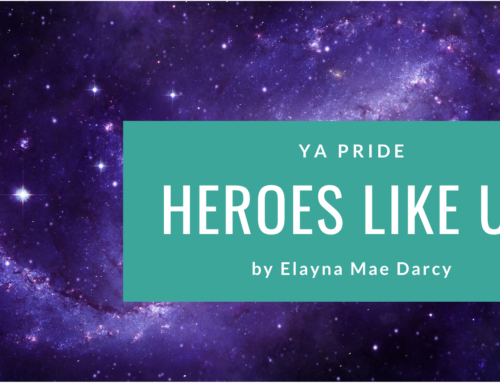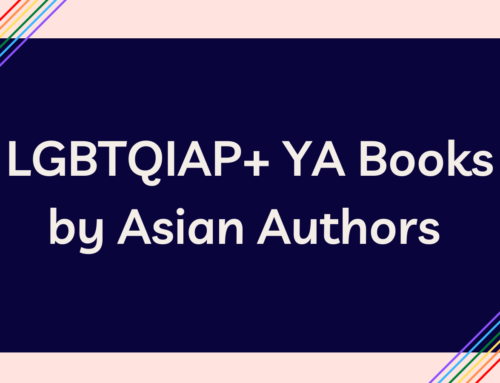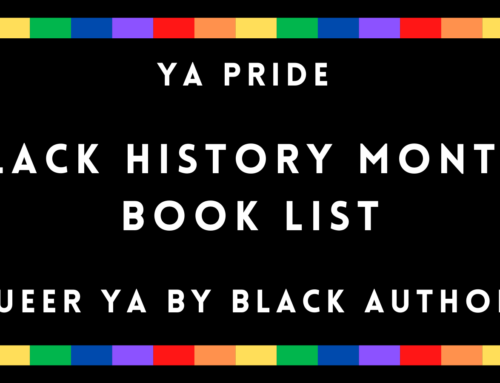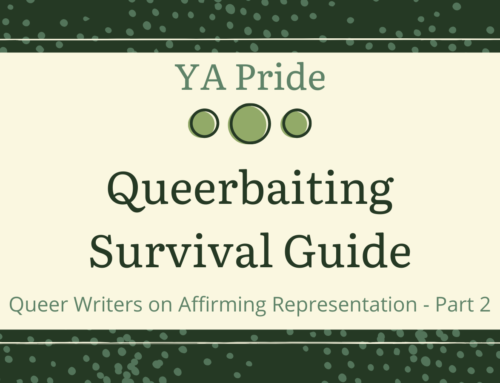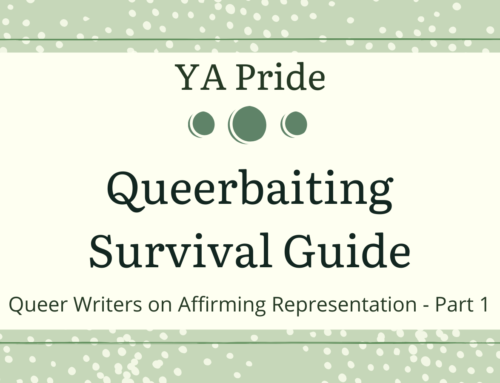One of my favorite ways to discuss diverse literature is with the concept of “mirrors and windows”- which is to say, some books will reflect one’s experience, while others will open the reader to a new perspective. Mitali Perkins describes it well here. A lot of times, I see people misusing it as a dichotomy; either this book will be a mirror of your own life, or a window into someone else’s. That ignores what I think are the best books, which- as Mitali mentions- are the ones that manage to do both. Seeing aspects of yourself in a character largely unlike you is maybe the best way to gain empathy you hadn’t ever realized you lacked.
I relate to characters for a wide variety of reasons. I’m not going to say that the gender of romantic interests, particularly in relationship to the gender of the protagonist, isn’t on that list of reasons at all, or that it shouldn’t be, but it strikes me as profoundly sad that there often seems to be an assumption that that’s all that’s necessary: if you’re a queer kid, you’ll relate to queer lit, and if you’re a straight kid, you’ll learn about a new life experience through it.
Well. No. Sorry, but no.
I connect with characters because of who they love and how they love and who they don’t love and why they don’t love them. I connect with characters because of how they approach romantic relationships and sexual relationships and familial relationships and platonic relationships. I connect with characters because of their interests and their talents and their skills and their flaws. I connect with characters because of choices they make and choices they don’t make, because I would make those same decisions or because I would make the opposite ones. If you remove any aspect of that, how can the characters seem real enough to be relatable?
I like stories about queer characters, and stories that deal with queerness, but I am over stories that reduce characters to nothing but sexuality. Those stories are neither windows nor mirrors. They’re black holes. And to say to any reader who falls outside prescriptive heteronormative standards that they should read queer lit for better self-understanding is missing the point.
I’d like to say this is a double standard- “You wouldn’t just shove any book with boys and girls kissing at a heterosexual kid and think they’d relate, would you?”- but the truth is, yes. Many people would do just that. Which is an issue in and of itself, but that’s an issue for another, equally long post.
The problem is that a lot of books with straight protagonists reduce their characters’ relationships to the interactions of non-matching genitalia, which assumes- well, many things, not the least of which being that biological sex and gender are the same thing. But that means that somehow people have books are queer-friendly when they reduce characters’ relationships to the non-heteronormativity of their sexual encounters.
In truth, those stories aren’t friendly. They’re antagonistic. They’re reducing human beings to secondary sexual characteristics. We say so often that we want queer kids to be treated the same as straight kids, but maybe the answer is that we need to treat ALL kids like people.
This is hard. I get that. Adults want nothing less than to treat teenagers and children like people, because people are complex organisms that have opinions we disagree with and do things we wouldn’t do and aren’t moldable. It’s so easy to say that their brains haven’t fully developed and their interests are nothing like ours and it’s our job to help show them the way. But in the process, I think we’re relying too much on the idea that there is a single way to be shown.
In my life as a full-fledged adult, I know a lot of grown-ups. Some are straight. Some are gay. Some are bi. Some are trans*. Some are aromantic. Some are asexual. Some are queer without any further detail, because they don’t want to share it with the world or none of the terms quite fits or they don’t feel comfortable with labels. And for many of these people, I have absolutely no idea which (or how many) of these categories they fall into, because it has nothing to do with my daily interactions with them.
But media teaches us that most teenagers are obsessed with sex (particularly if they self-identify as male) and romance (particularly if they self-identify as female). Even if they have other interests, their primary focus is on romantic or sexual relationships. In fact, characters who aren’t obsessed with the secondary-sex characteristics of their desired partners are often seen as immature. I just don’t believe that that’s true.
I thought about a lot of things in high school. I thought about the gossip circulating my classes, and how not to be the subject of it, and whether my best friend was intentionally avoiding me or if we just hadn’t crossed paths. I thought about homework that I didn’t want to do and why my teachers were so mean and what sadist came up with gym class. I thought about how exhausted I was and whether marching band practice would end early and whether I’d be home in time to set the VCR for new episodes of Buffy the Vampire Slayer. Frankly, with all of that, I didn’t have TIME to devote as much energy to thinking about sex as most fictional protagonists seem to do. And I wasn’t even working as a spy, never mind living in a post-apocalyptic wasteland where every move could be my last.
Am I saying avoid these things in stories? Of course not. Romance can be important. Sex can be important. There’s both a need and a market for stories primarily about queer romantic and sexual relationships, and there always will be, the same way there will always be one for heterosexual ones. But that doesn’t mean that is the only choice when it comes to talking about queer characters. If interest in romance and sex doesn’t vary by character and by situation, something is wrong- no matter where on the gender or sexuality continuums anyone falls.
A lot of the queer stories submitted to me try to course-correct the default of straightness by doing exactly the same thing, but with same-sex couples. I understand and empathize with the urge; everyone wants their experience to be normalized. But this kind of normalizing excludes a different reader, while simultaneously making the story far, far less than it could be. It’s great to think about a gay Twilight or a gay Looking for Alaska or whatever. But what I look for when going through submissions is a story that’s wholly its own, about characters who feel like real people, not a clever re-characterization of something that already exists. Too often, it feels like rich straight white characters get the story first, and then everyone else has to follow.
When there are enough stories that don’t take into account the way you live your life, even if individually they may be great, collectively they are neither windows nor mirrors. They become a single, monolithic brick wall. But one of the things I love about YA literature is that we aren’t content to just let it stay that way. Authors are writing vivid, complex characters, many of whom don’t just fit the dominant paradigm but have their adventures anyway. It’s slow, but it’s happening, and it’s valuable every time.
When I was in grad school, I spent a lot of time thinking about how queerness was portrayed in children’s literature. It’s exciting for me to be in publishing now, and not just see the change sweeping the field, but be a part of it.
